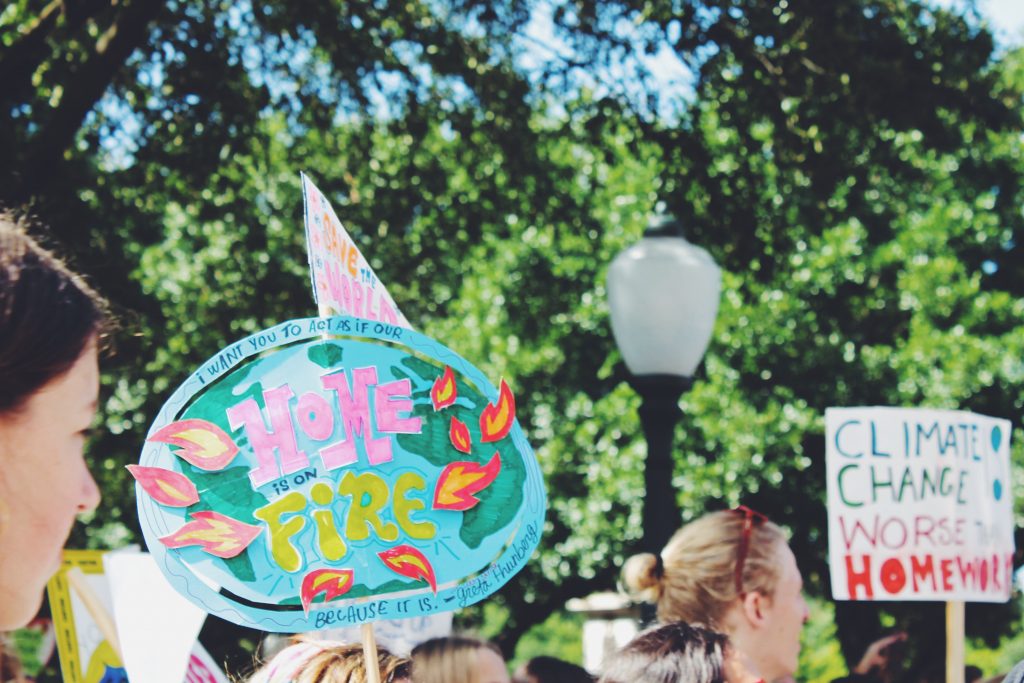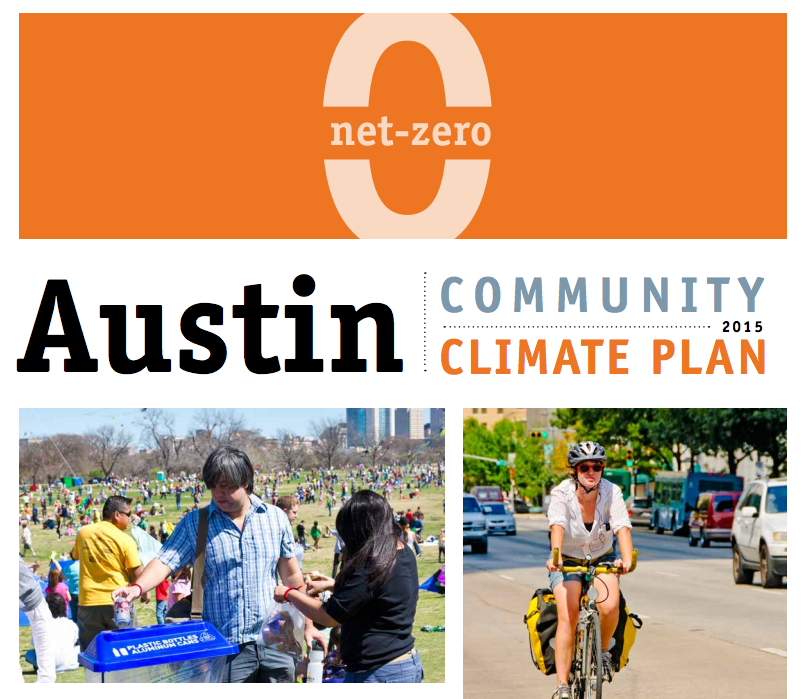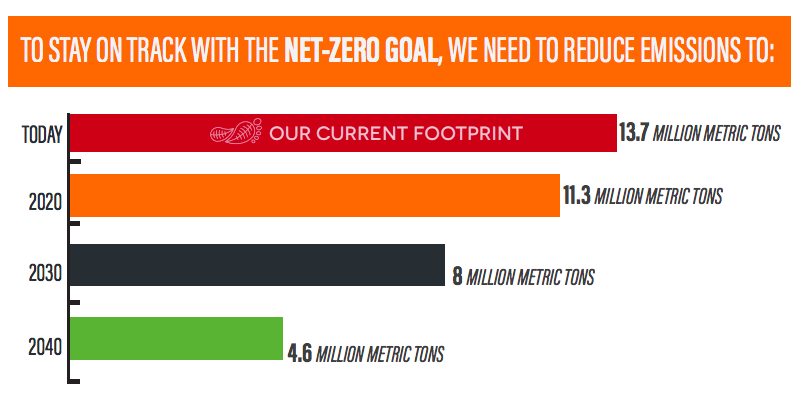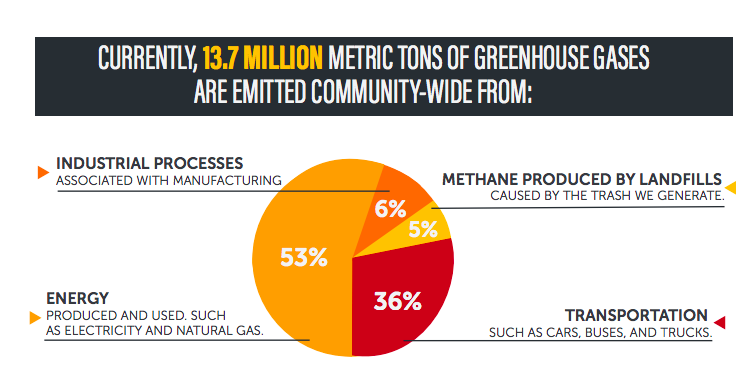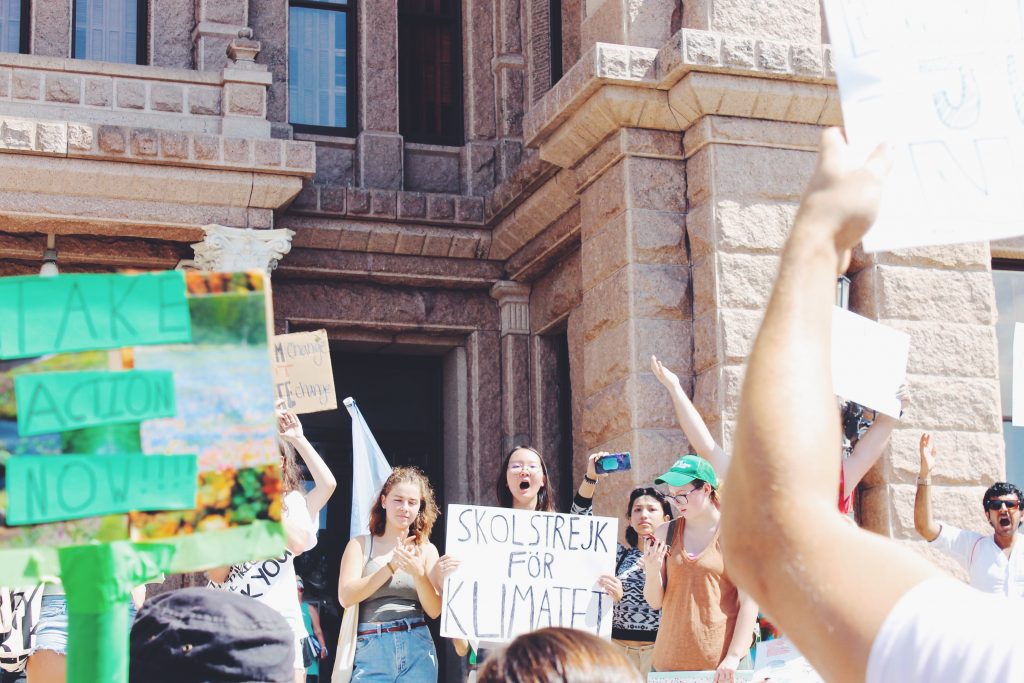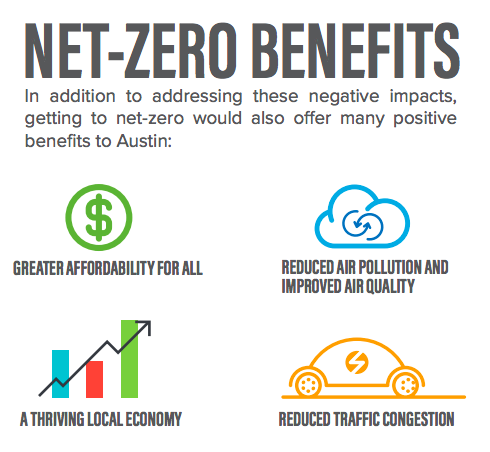This is part two of our Beyond The Strike series, showcasing the many proposed solutions, ideas from inspiring community leaders, and opportunities for you to get involved around climate justice in Austin. You can read part one of the series (which focuses on energy) here.
If there’s one message that came out of last week’s climate strikes it was this – we are not acting fast enough.
But now the question remains, how? How do we transition from a world run that runs primarily on fossil fuels to one that doesn’t? And how do we do it in a way that’s equitable and just?
These are the questions Austin is currently grappling with as we begin the process of updating our Community Climate Plan. First passed in 2015, this plan sets our city on a path to net-zero carbon emissions by 2050.
But a plan this big doesn’t actually work unless the community helps to write it and make it happen in the real world. That’s where you come in.
A lot has changed since 2015. This time around, the focus is shifting to build a plan that acts with more urgency and has equity at its very core.
Want to be a part of the conversation? Watch our video interview with Zach Baumer (Climate Program Manager with the City of Austin Office of Sustainability) and read our 10 quick facts you should know about Austin’s climate plan below.
10 Quick Facts You Should Know About Austin’s Climate Plan:
1. In 2014, Austin City Council set a goal of reaching net-zero community-wide greenhouse gas emissions by 2050 (or sooner if feasible).
This is just a fancy way of saying that by 2050, Austinites will be producing virtually no climate change-causing emissions, not from the cars that we drive, the electricity we use, nor the trash we throw away.
2. To help reach the goal of zero emissions by 2050, the city passed the Austin Community Climate Plan in 2015.
The plan includes emission reduction targets for 2020, 2030, and 2040, as well as a list of over 130 actions that can be completed by both the city and the community to reduce emissions from energy, transportation and land use, industrial processes, and waste. The plan was developed in collaboration with city staff (led by the Office of Sustainability) and community leaders.
3. When the Community Climate Plan was written in 2015, our goal was to be down to 11.3 million metric tons of emissions by 2020… and it seems like we’re going to meet that goal.
As the Office of Sustainability announced in a 2019 update memo to City Council, our emissions in 2017 (which is the most recent data we have) were 12.5 million metric tons of carbon dioxide equivalent, a decrease despite the fact that our city’s population grew doing that time.
It is important to note that a lot of these emission reductions have come from energy (and our electric utility investing more in renewables and energy efficiency) and waste/landfills. In their update memo to City Council, the Office of Sustainability said that emissions from transportation actually increased, when compared with the year before.
“Current projections based on these activities suggest that Austin will meet the interim emissions reduction target of 11.3 million metric tons of carbon dioxide equivalent by 2020,” wrote the Office of Sustainability in the update memo. “This will largely result from meeting 65 percent of energy needs with renewables by 2027 based on the current Austin Energy Resource, Generation, and Climate Protection Plan. Strategies to reduce emissions from transportation sources and associated land use decisions will be increasingly important to achieve the goal of net-zero emissions by 2050.”
4. Our carbon emissions come from several different sources, but primarily from energy and transportation.
5. The city has just begun the process of updating the Community Climate Plan. This time around, there’s a heightened interest in acting with even more urgency than was first imagined five years ago.
A few things that have led to this growing sense of urgency include:
- In August, City Council passed a resolution declaring an official “climate emergency” and calling for an “immediate emergency mobilization to restore a safe climate.”
- In 2018 the UN published a report saying that we really only have 12 years to dramatically reduce global emissions
- In 2018, 16-year-old Greta Thunberg began protesting outside the Swedish Parliament building and set off a worldwide, youth-led movement calling for more urgent action on climate change
- In 2017 Hurricane Harvey dumped 47 inches of rain along the Texas coast, wreaking havoc on the lives of thousands of Texans
6. Not only will the new plan likely have more of an emphasis on urgency, but also on equity.
In an interview with AEN, Zach Baumer (Climate Program Manager with the City of Austin Office of Sustainability) explained that incorporating equity into emissions reduction will be a major focus of the plan update, as well as figuring out new ways to both act quickly and equitably.
“That question of how do you do things faster, and maybe spend more money and are more expensive, versus how do you do things that work for every community member? And how do we make sure that we’re addressing affordability, and equity, and fairness in the plan?,” Zach said.
“There’s going to be a balancing act there. That’s going to be the hard work of this plan this time around. Not only are we trying to make the plan more focused and more engaging, but also distinctly focused on improving racial equity, and through implementation, being more fair and just in the community, and not just focused on creating the benefits for whoever can pay.”
7. The Community Climate Plan update will include two new sections.
The 2015 plan divided action items across four different areas – electricity and natural gas, transportation and land use, materials and waste management, and industrial process. This time around, two new sections will be added to the mix:
- The things we all buy – most of our food, clothes, etc that we buy isn’t produced here. It’s made somewhere else and then shipped to us, which produces emissions.
- Natural systems – how can we naturally “capture” carbon with trees, soils, agriculture and other natural processes?
8. This is not a government-only plan.
The Austin Community Climate Plan envisions an Austin basically free of carbon emissions, which means that it will take the participation of everyone (you, me, nonprofits, businesses) to make it a reality. (After all, the government alone is not responsible for all of the emissions in this city, although city staff is heavily involved in helping to organize and write the climate plan.)
However, with the first climate plan, a lot of the actions were still directed at city/government departments, since that’s an area where the city government has the most control. But as Zach said in our interview, you can’t just drive this massive shift away from fossil fuels only with city government directives.
“So I think there’s going to be more focus on, how do we make the solutions that are being proposed and are going to be implemented in the coming years really work better for businesses, and work better for residences in the community, and get people more plugged into taking actually taking that action,” Zach said.
9. A more diverse array of people will be involved in developing this year’s plan and there will be more ways to participate than last time around.
In order to develop this update to the climate plan, the Office of Sustainability will help to organize a steering committee and several technical advisory groups (focused on particular sections of the plan, like transportation, waste, etc) made up of volunteers from the community and city staff members. Serving on one of these committees/groups is a high time commitment volunteer opportunity, with at least a meeting every month for several months.
In addition to this, the Office of Sustainability will also be running smaller workshops/focus groups, as well as a climate ambassador program, specifically to reach out to and learn from more diverse segments of the community.
“Because I think as we’ve learned over time, some people are excited about coming to a city meeting or participating in a process with a city department, but many people aren’t,” Zach said in his AEN interview. “And if we only include that small segment of the population who will come to meetings that I organize, then the plan is going to look a certain way.”
Throughout this entire community engagement/plan update process, equity and diversity will also play a major role. As the Office of Sustainability writes on its website, “We know that climate solutions have the potential to improve the quality of life of all Austinites, but climate change impacts don’t affect everyone equally. Ensuring that we are increasing equity while mitigating greenhouse gases means examining the history of racial segregation and environmental justice issues in Austin. Because of this, we are seeking a racially and economically diverse set of people who are willing to speak about the challenges, barriers, and opportunities facing historically underrepresented groups — specifically, people of color — in conversations around energy, transportation, food, and access to nature. If this sounds like you, we’d like to get in touch!”
10. Climate/environmental solutions will be tied to solutions that actually make peoples’ lives better.
As Zach explained to AEN, one of the biggest things he’s learned in working on climate change is that, for far too long, we’ve been “trying to encourage people to do things that are inconvenient or cost more, just because they care about the environment, and you’re somehow supposed to sacrifice things. It’s been very well documented that is only going to work for 10 percent of people,” Zach said.
“We can’t keep trying to environmentally-educate ourselves out of these problems.”
That’s why his hope for the Community Climate Plan update is that it more closely ties emission reduction to things that will make Austinites’ lives better – things like good jobs, less traffic, healthy lives, better food, and more access to nature.



